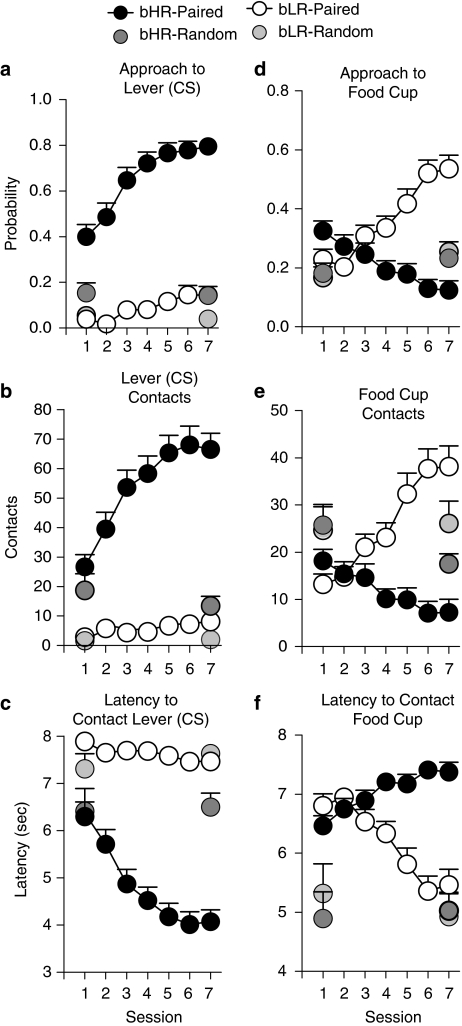Figure 2.
Comparison of CS-directed vs goal-directed conditional responses (CR) in bHR and bLR rats from generations S13–S16. Rats in the ‘paired' groups (n=43/phenotype; bHR black circles; bLR open circles) received paired presentations of the lever-CS and food (US) and those in the random groups (n=11/phenotype; bHR dark gray; bLR light gray) received pseudorandom presentations of the CS and US. Data are expressed as the mean+SEM and are illustrated over the course of seven training sessions (25 trials/session). The following variables are illustrated: (a) probability to approach the lever-CS; (b) number of contacts with the lever-CS; (c) latency to contact the lever-CS (in seconds, with 8 being maximum); (d) probability to approach the food cup; (e) number of contacts (or head entries) with the food cup; and (f) latency to contact the food cup during CS presentation. Both bHR and bLR rats (in the paired groups) learned a CR at about the same rate, as indicated by the changes in behavior over the course of training. However, for bHR rats, the CR was directed toward the CS-lever; whereas for bLRs it was directed toward the food cup.

